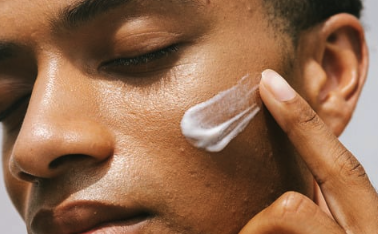Benefits of Ceramides for Indian Skin
Simple guide for Indian Skin

Ceramides are natural fats (lipids) that make up a big part of your skin’s outer layer. Think of your skin cells as bricks and ceramides as the mortar that holds them together. When this “mortar” is strong, your skin stays healthy, soft, and protected.
Key Benefits
Strengthens your skin barrier
Ceramides form nearly half of the skin’s barrier lipids. A healthy barrier keeps irritants out and water in. Low ceramides—due to aging, harsh cleansers, weather, or pollution—can lead to dryness and irritation. Adding ceramides helps rebuild this barrier so skin feels comfortable again.
Locks in moisture
Ceramides reduce water loss from skin. This helps your skin stay hydrated, plump, and smooth. As we age, natural ceramide levels drop, so a ceramide moisturizer can be especially helpful for dry or mature skin.
Suits Indian climate and lifestyle
In India, many people face heat, humidity, AC indoors, and pollution outdoors. These can weaken the skin barrier. Ceramides act like a shield—supporting the barrier against daily stress so your skin stays balanced and less reactive.
Calms sensitivity and irritation
If your skin feels easily irritated—redness, itchiness, stinging—especially when you use actives like retinoids or acids, ceramides can help. They support repair and make your routine more comfortable.
Helpful for eczema, psoriasis, and acne
Skin conditions with a damaged barrier—like eczema and psoriasis—often benefit from barrier-supporting ingredients such as ceramides. Acne-prone skin can also be dehydrated; keeping the barrier healthy may improve tolerance to acne treatments and reduce dryness.
Works for all skin types
Ceramides are generally non-comedogenic and well-tolerated. Whether you have dry, oily, combination, sensitive, or acne-prone skin, a ceramide moisturizer is usually a safe choice.
Pairs well with other skincare
Ceramides work nicely with humectants like hyaluronic acid and glycerin (to draw in water), niacinamide (to support the barrier and reduce redness), and other lipids like cholesterol and fatty acids (to mimic skin’s natural mix).
How to use ceramides in your routine
- Pick the right format: Look for moisturizers or serums listing ceramides (e.g., Ceramide 1, 3, 6-II).
- Layer smartly: After cleansing, apply a humectant (like hyaluronic acid) and then seal with a ceramide moisturizer.
- Patch test: If your skin is very sensitive, test on a small area first.
- Be consistent: Daily use helps strengthen and maintain the barrier over time.